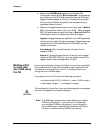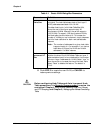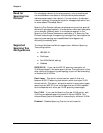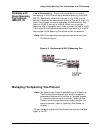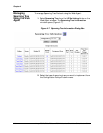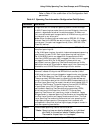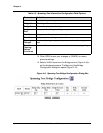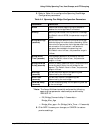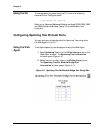
4-14 Avaya P550R, P580, P880, and P882 Multiservice Switch User Guide, Version v5.3.1
Chapter 4
Need for
Spanning tree
Protocol
For a bridging network to function properly, only one active path
can exist between two stations. Multiple active paths between
stations cause loops in the network. If a loop exists in the bridged
network topology, the potential exists for message duplication, and
in some cases a “Broadcast Storm”.
Spanning Tree Protocol defines a single spanning tree that spans all
switches in a bridged network. It forces certain redundant data paths
into a standby (blocked) state. If one network segment in the
Spanning Tree Protocol becomes unreachable, or if Spanning Tree
Protocol costs change, the spanning-tree algorithm reconfigures the
spanning-tree topology and reestablishes the bridge port by
activating the standby path.
Supported
Spanning Tree
Configurations
The Avaya Multiservice Switch supports four different Spanning
Tree configurations.
■ IEEE 802.1D
■ Dual-Layer
■ Per-VLAN (Default setting)
■ Disabled
IEEE 802.1D - If you use the 802.1D spanning tree option all
VLANs participate in the same spanning tree. The implication is that
after resolving the spanning tree topology, a port will be forwarding,
or blocked for all VLANs.
Dual-Layer - This option is to be used on a switch that is in
between a 802.1D spanning tree domain switch and a per-VLAN
domain switch. This option, allows the switch to terminate a legacy
spanning tree (802.1D) from old bridges that are VLAN incapable,
and interoperate with other per-VLAN spanning tree bridges.
Per-VLAN - If you use the Spanning Tree per VLAN option, each
VLAN runs a separate spanning tree with its own BPDUs. This
allows different ports to blocked or forwarding for different VLANs.
Disabled - Disables Spanning Tree for the entire switch.



